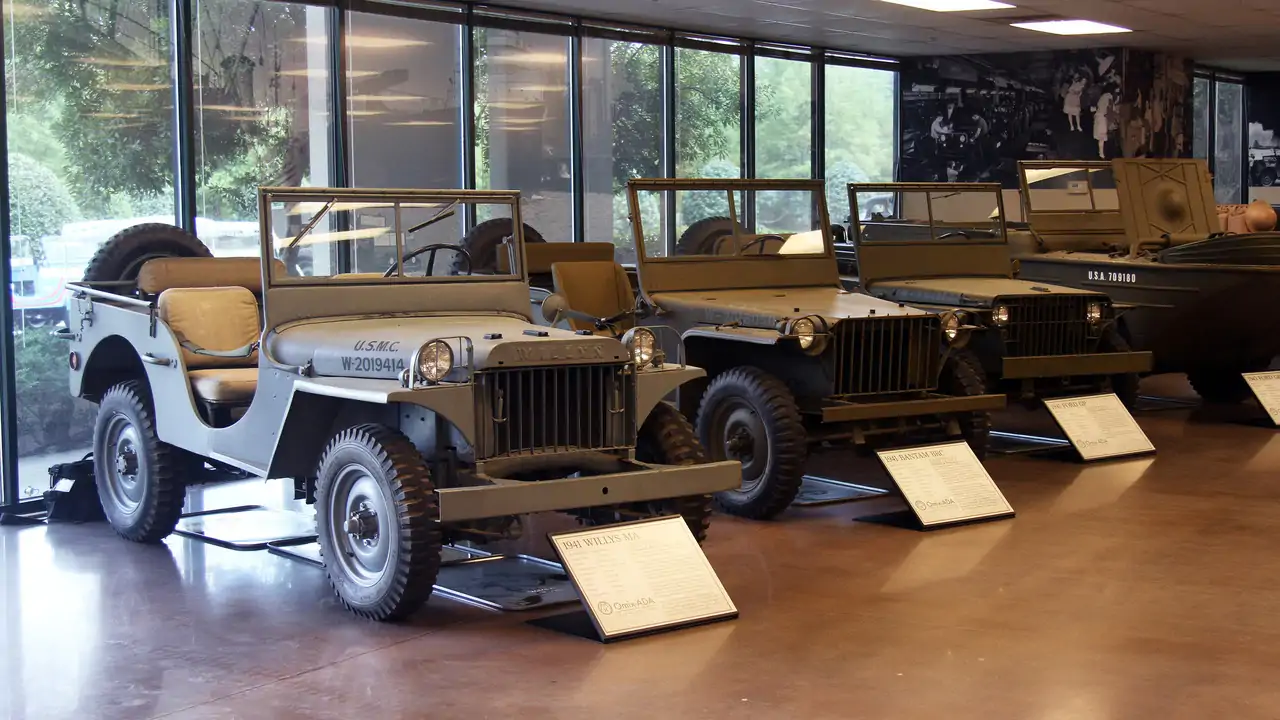 The Jeep Collection taught us 75-years of history and correct pronunciation of Willy’s.
The Jeep Collection taught us 75-years of history and correct pronunciation of Willy’s.
In eleven months, I will have four wheels pointing at a grandiose, pretentious quest. It all begins when I put the Toyota Land Cruiser’s two rear wheels in the Beaufort Sea, just off Prudhoe Bay. It ends when the Cruiser’s front wheels are placed in the surf off Tierra del Fuego – specifically in Bahia Thetis in Argentina, near where the Beagle Channel mixes the antipodal waters from the Atlantic and Pacific Oceans.
Although I don’t know the time it will take to cross the Americas, I know that I must learn some basics about the trip.
Preparations started with a trip to Suwanee, Georgia (pronounced sue-WAHnee), about 45 minutes north of Atlanta. I came to Dave Logan to learn trail driving lessons from him, a former instructor in global off-road driving. He’s also a Mentor in Muck and has a wide range of skills from oil exploration engineers to U.S. Special Forces.
Something funny happened on the way to the trailhead, though: I got waylaid by the vintage Jeeps at Logan’s current workplace, the you-name-it-we-got-it Jeep parts purveyor Omix-ADA. Omix was established in 1992 as a supplier of replacement components for Jeeps in Europe and the Middle East. Since 1992, the company has been divided into three different operations to serve America’s most beloved general purpose vehicle. Omix-ADA is responsible for vintage Jeep restoration and repair. Rugged Ridge designs and produces a variety of non-drivetrain accessories. Alloy USA manufactures performance drivetrain gear (axle shafts and gear sets, etc.). Omix’s men and women can help you build your Jeep using any engine or frame. The company warehouse houses a wide range of Rugged Ridge accessories, which seven Omix engineers have developed and tested. It also contains tubs for a 1948 Willys, an old stock 4.0-liter Inline-six and 278 stamped body sides to fit the 1984-186 Cherokee the company purchased from a Malaysian Chrysler plant. Henk Van Dogen, Omix’s marketing chief, explained to us why he kept a huge Jeep flea market full of parts.
Al, the owner of the company, is a friendly, urbane individual who is open to the idea of vintage gear. Al, despite his commercial tendencies, began to buy historic Willys and Jeeps. Omix headquarters now houses a small collection of steel treats. We thought it appropriate to pay tribute to the stepping-stone models which took us from the 1941 American Bantam BRC to our present JK-series Wrangler on the 75th anniversary.
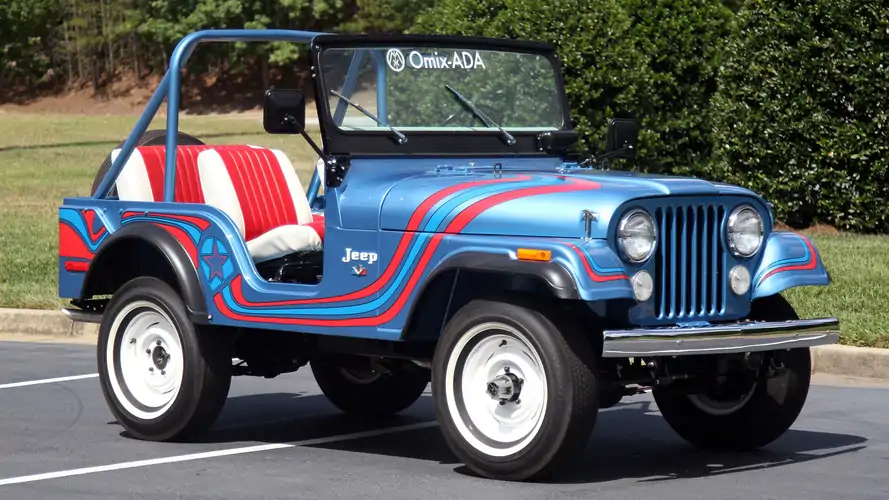
Logan opened the amusement park and brought six museum pieces with him for short drives. They were a 1945 Willys MB (the 1960 Willys DJ-3A Surrey), a 1955 CJ-5 (the 1964 Willys CJ-3B), a 1973 Jeep CJ-5 Super Jeep and a 1986 Jeep CJ-7. The overwhelming impression when comparing them chronologically was the difference in each generation’s progress. The reason is that the source material was so primitive that it was almost impossible to progress, which is why the overwhelming impression was that each generation advanced. Fred Flinstone would have been on strike if Hanna-Barbera animators tried to force him to drive one of the original Willys MBs. Fred wouldn’t have fitted, but it’s not like Fred would. I’m not very small, but Fred Flinstone isn’t me. The 1945 Willys’ 17 inch steering wheel buried my legs. The pedals were so close together that I couldn’t lift my legs and could barely reach my feet over them. My knees were in different time zones as I tried to lift my quads off the steering wheel to free them from the Willys. After I had removed myself from the cockpit, I realized that I have never seen a fat guy driving a Willys.
Apart from the Surrey, every model that succeeds it feels decades away from its predecessor is because Jeeps have long lives. Kaiser made the CJ-3B in 1953, 1968, and the CJ-5 in 1954-1983. Each model was a new era of vehicle manufacturing. The CJ-7 with its four-speed auto was my first car. I was embarrassed to show off such luxury in public.
Finally, I got around to learning everything Logan had to say about off-roading and how to handle a Wrangler on 37s through Georgia red clay. Before I start, you can see the photos below to learn more about some of the museum’s most notable pieces and other information on Rugged Ridge. The museum is open Monday through Friday by appointment if you are a Jeep enthusiast. Rugged Ridge at SEMA will feature a truckload Willys’ and Wranglers, from 1941 through 2017.
To prove that you can understand what they are talking about, here’s a hint: Will- iss is the correct pronunciation.

The Omix-ADA Jeep Collection’s three goabouts are the beginning. The 1940 US Quartermaster Corps (QMC), the US government’s Quartermaster Corps, sent a request to 135 companies worldwide – almost all of the existing car companies – for a light reconnaissance vehicle. The QMC required unrealistic specifications so only two companies responded: American Bantam (and Willy’s). Bantam won with the Bantam Reconnaissance Car (BRC). The government thought Bantam was too small and financially insolvent to fulfill the contract. So, the government gave Ford and Willys the Bantam design and asked all three companies to construct it. Omix-ADA is the only organization in the world that houses three original Jeep prototypes of these three companies. The 1941 Willys MA is in the foreground, while the 1941 Bantam BRC is in the middle and the 1941 Ford GP at the end.
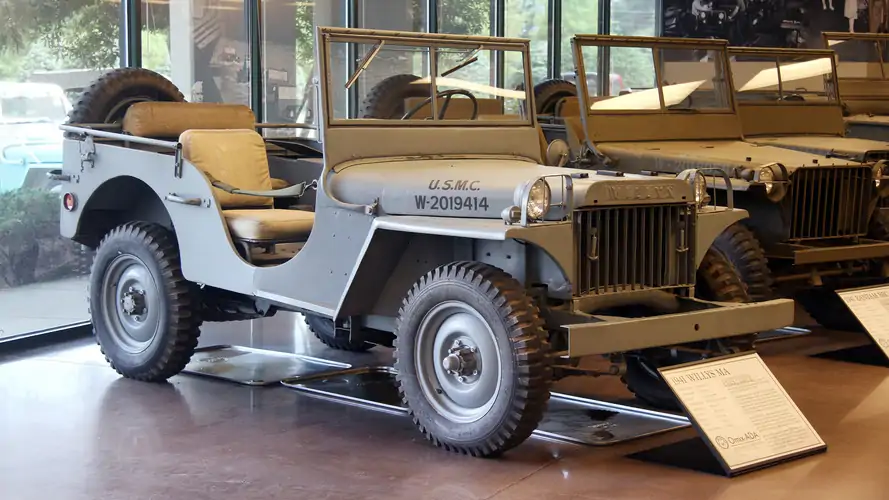
Willys produced only 1,550 units for the 1941 Willys MA prototype. This was the lowest production run of any of the three prototypes and only 45 examples are known to exist today. The design inspirations for the MA came from the Ford GP and Bantam BRC. It was the basis of two vehicles, the standard-for-war Willys MB, which would become the Jeep, as well as a quarter-ton truck. It was the heaviest prototype, and had the most powerful engine. This fact helped it to become the de facto war car: a 134-cubic inch Go Devil “Lhead” four-cylinder with 60 horsepower, 105 pound-feet torque, and a 134 cubic-inch Go Devil 4-cylinder.
The 1941 Bantam BRC was the third generation of vehicles submitted to the government competition. It follows the Bantam Pilot, and the BRC-60. This vehicle was chosen by the War Department as the winner. It is the first vehicle to bear the name “Jeep,” (which the 1943 documentary claims came from the initials “GP,” which stands for General Purpose Vehicle, but this is unlikely to be true) and the first to enter combat service. Bantam paid $739 for the, which was the least expensive of the original submissions. The average passenger car costs around $900.
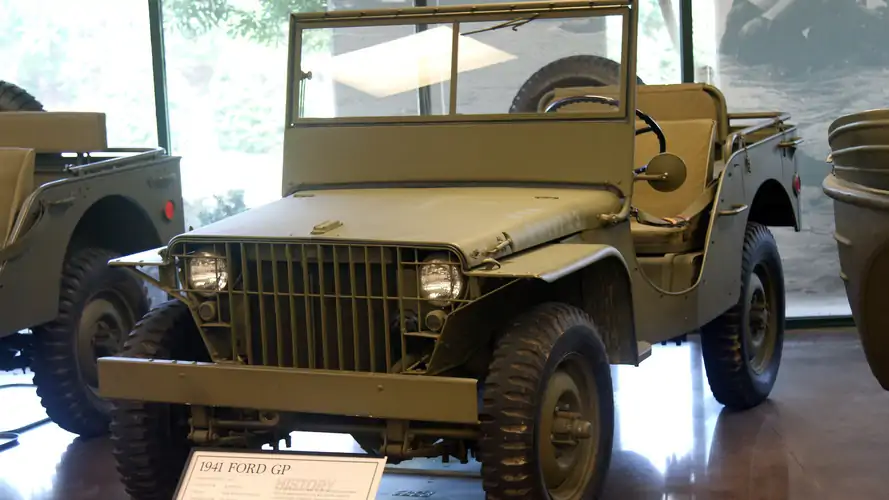
Henry Ford needed to be convinced to enter the contest to build the light recon vehicle. Ford of Europe was already making trucks for the Nazis. With this 1941 Ford GP prototype, which Henry’s company submitted following the original Pygmy, the Blue Oval entered the race. G stood for government and P denoted a recon car with an 80-inch wheelbase. GP was not an acronym for General Purpose nor Government Pygmy. The GP was powered by a 120-cubic inch four-cylinder engine with 45 hp, 84 lb-ft.
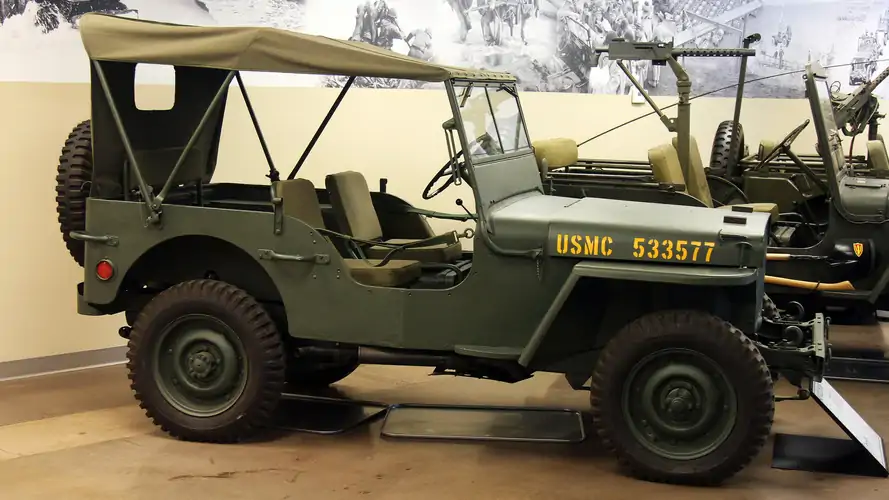
This 1942 Willys MB is the standard-spec Jeep. Bantam had won the contract, and was the model for all subsequent models, but the government didn’t have enough savvy or influence to match Ford and Willys. Bantam was relegated to making plane parts and trailers by the government in 1942. Willys constructed the MB between 1941 and 1945, while Ford built the GPW – the W denoting Willys’ licensed design), producing a total 361,339 units.
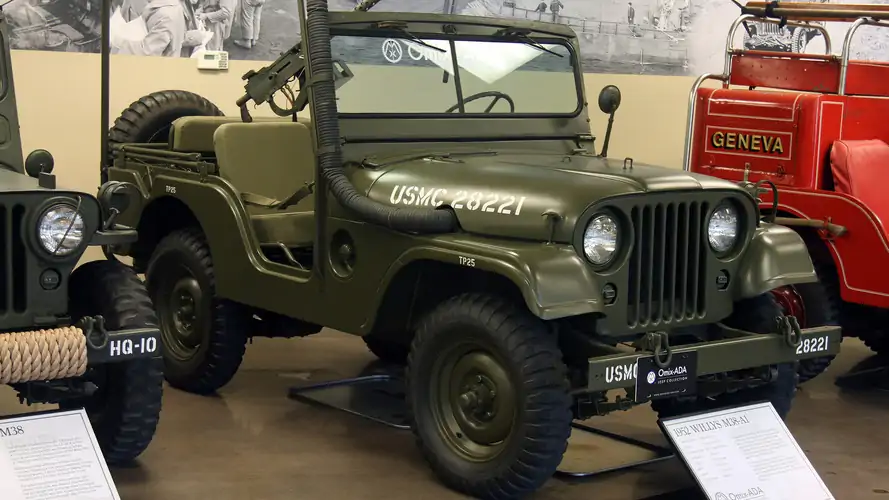
1952 Willys M38 A1 introduced the amphibian-esque Jeep front and roundedfenders. The Hurricane F-head engine was required to create the high-rounded hood. The four-cylinder of 134 cubic inches produced 72 horsepower and 114 lb.ft.
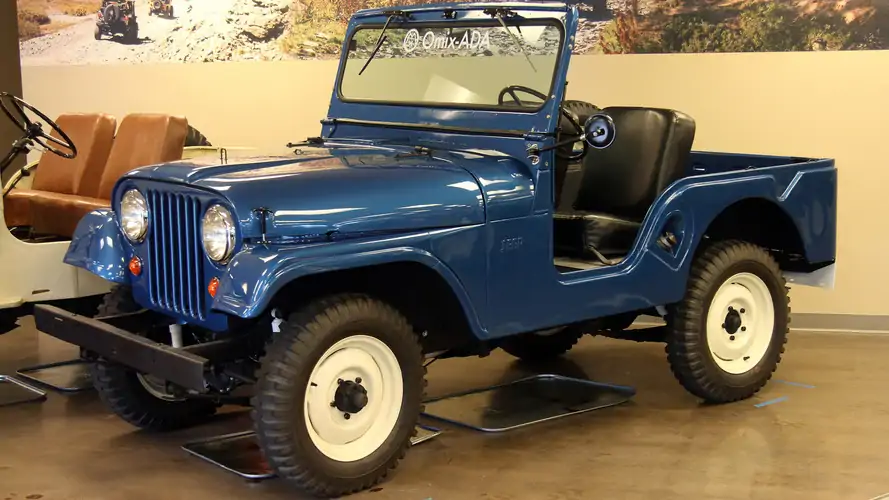
This 1955 Willys CJ-5 is the first year for the model. Willys did not make a CJ-4 so this was the introduction to modern Jeep looks (if you count 1955). You can see the next 30 years worth of Jeep design language if you put a rollbar on it.
In 1963 Willys became Kaiser-Jeep and American Motors purchased the company in 1970. Since 1966 Kaiser had been selling the convertible Jeepster Commando, which was designed to compete with both the Ford Broncos and Toyota Land Cruisers. The Jeepster Commando was not selling well and AMC wanted AMC to capitalize on the muscle car craze. AMC rebuilt the Jeepster Commando into the Jeep Commando , then finished development for this limited-run 1971 Jeep Commando Hurst Edition.

Another rarity is this 1973 Jeep CJ-5 Super Jeep. Only 300 were made. After being on sale for three consecutive years, the Renegade was discontinued in 1973 when Jeep ran out of aluminum Renegade wheels. Jeep came up with the CJ-5 Super Jeep instead of selling the Renegade. The Super Jeep looked like a doll set accessory. It was available in six colors and featured a vari-hued stripes package that runs from the hood to the tailgate. There were also curved chrome bumpers in front and a two-tone interior. Eight-inch steel wheels are included.
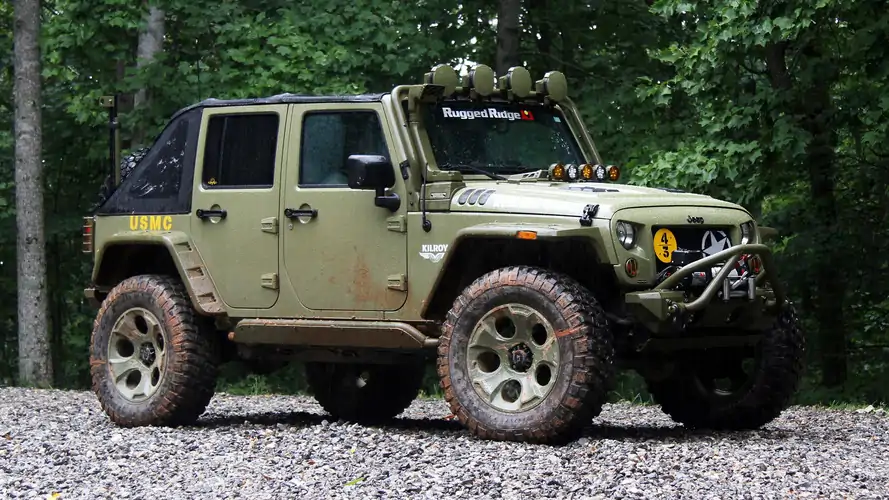
Jeep’s JK-series Jeep Wrangler was introduced in 2006 and changed everything. The addition of a four door model to the JK Wrangler lineup made it more popular than the TJ series. It continues to grow. Omix-ADA informed us that the JK Wrangler was the most customized vehicle in the world. They change their hands often and each new owner upgrades early and often. This is why Omix has grown from 20 employees to 125 over the past ten year. Kilroy is the name of this 2013 Wrangler, which was a Rugged Ridge promo that was loaded for bears – or their enemies – and came with all of Omix’s accessories.
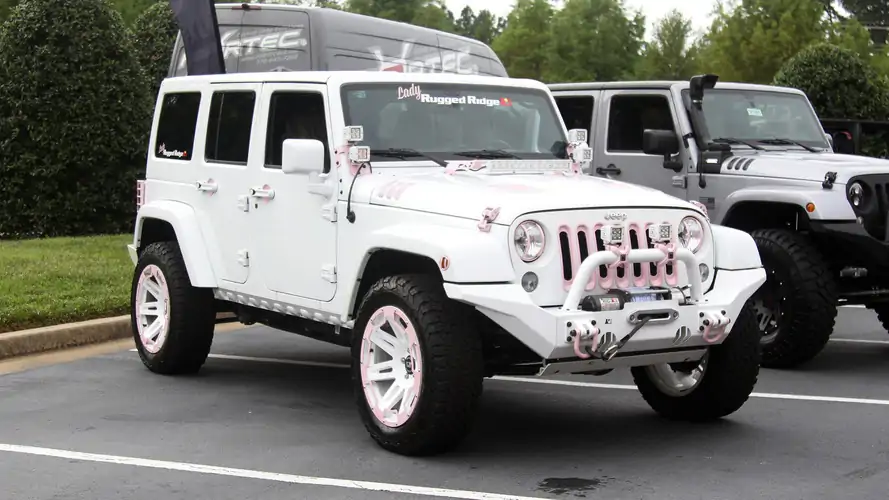
We were taken aback by this one, to put it mildly. Omix claims that 55 percent of Wranglers are purchased by women. This stat, along with a brightly colored Wrangler with hot pink accents is something that can’t be overlooked. The brand’s next-generation JL Wrangler will help it grow further here and abroad. You can still see more historical Jeep glory at the Jeep Collection website until it arrives next year.